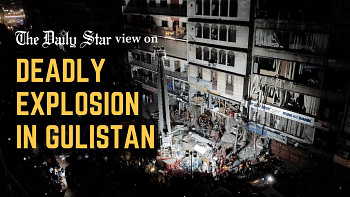Beware of methane leaks!

It has been known for some time that Bangladesh, one of the countries most vulnerable to climate change, has also been a major contributor of methane, a greenhouse gas about 80 times more potent in its first two decades in the atmosphere than carbon dioxide. Bangladesh has some of the highest methane emissions in the world that can be detected by satellites, according to a 2021 analysis. A new study by the well-known scientific journal Environmental Research Letters has now supported this finding, suggesting that methane emissions in Dhaka are well in excess of those of the surrounding regions. In the study, which was based on satellite observations over nearly four years, Dhaka ranked second in a list of 61 cities responsible for the highest methane emissions in the world.
There have been three major contributing factors – untreated garbage, wastewater and leaks in gas connections – which, together, form a deadly combination that is not only contributing to the global warming but also making life in Dhaka quite vulnerable. Each of these sources deserve appropriate scrutiny. Apparently, 47 percent of Dhaka's methane emissions is caused by garbage. The study identifies 13 dumps where garbage is left in the open and decomposed leading to methane emissions. Moreover, constant pollution and contamination of water sources is also causing this. The other source identified – leaks in gas connections – is due to negligent handling of Titas Gas connections, which has been responsible for some recent building fires and explosions.
The findings of this study make a compelling argument in favour of taking a critical look at Dhaka's waste disposal system and utility services. Reportedly, Dhaka produces about 10,000 tonnes of waste every day. The city corporations collect and dump about half of them, while the rest is left littering roads, open spaces and water bodies. Often, buildings are constructed on wetlands by filling them up with waste and earth. Add to this the questionable electrical and structural safety of most buildings. Excess concentrations of methane – which is a highly combustible gas without colour or odour – thus produced can lead to explosions, when it comes into contact with fire or electricity. One may recall that methane leaks, among other reasons, were blamed for the recent Science Lab blast or the 2020 explosion in a Narayanganj mosque, which went on to claim 34 lives. In Narayanganj alone, at least 82 people died in gas explosion-related fires over the last three years.
The risks for Dhaka, Narayanganj and other congested cities are clearly two-fold: through increasing methane concentration, we are not only compromising our long-term future and that of the earth, but also causing a very real and immediate threat to the survival of city-dwellers. Lack of awareness and indifference to the build-up of methane are primarily to blame for this situation. The methane menace, however, is only symptomatic of what residents in general have to go through on a daily basis, with poor air, poor-quality food and water, poor waste disposal (without treatment), and poor services in all other aspects. We, therefore, urge our city fathers to take the methane study as a reminder of the massive reforms that Dhaka needs to improve its quality of life. Residents deserve to live without a threat to their life every other day.


 For all latest news, follow The Daily Star's Google News channel.
For all latest news, follow The Daily Star's Google News channel. 








Comments